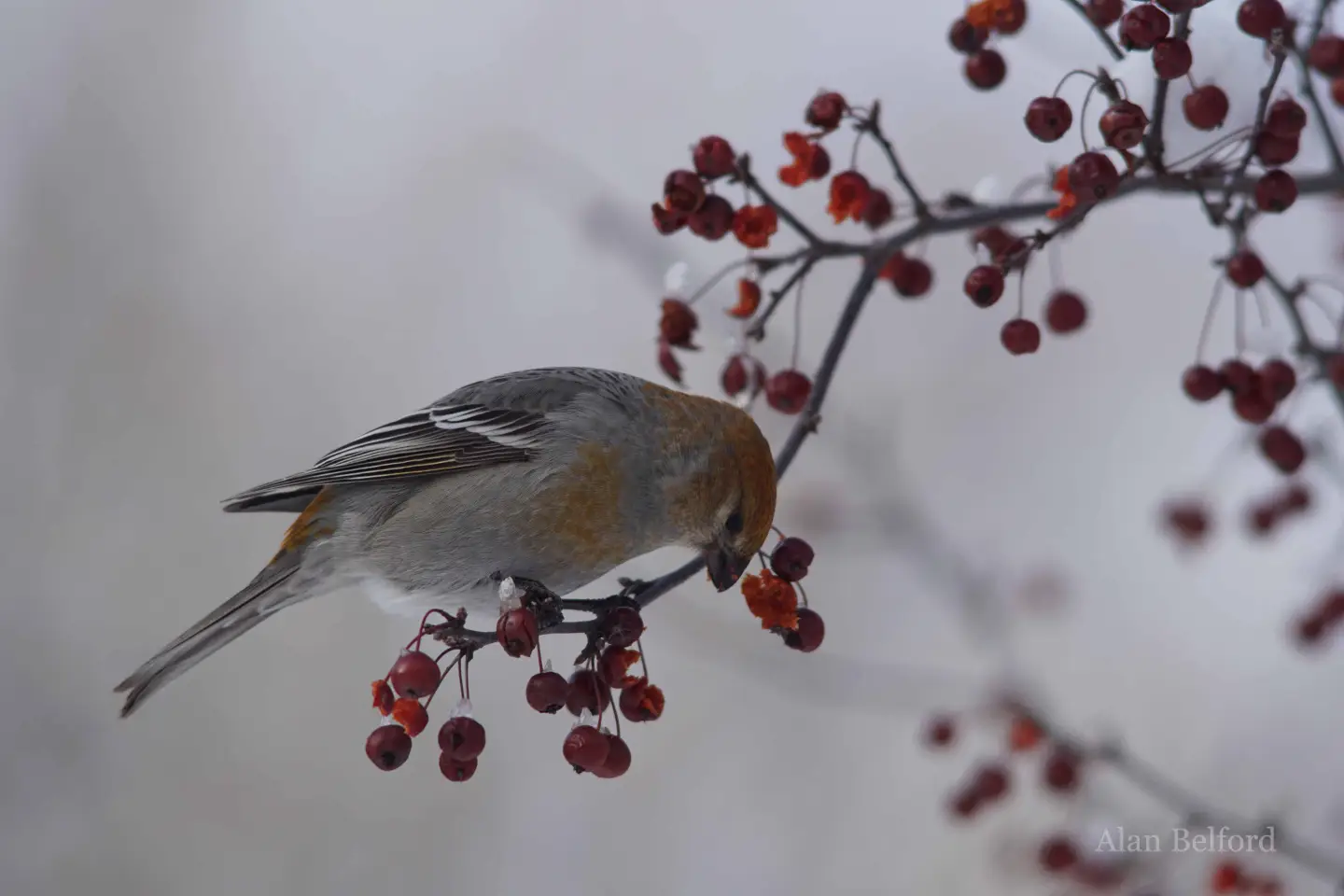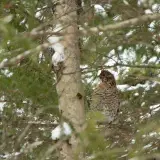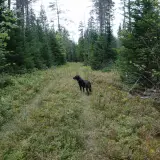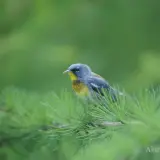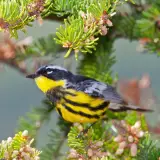Sticking close to the road
While birding is often done by exploring trails and waterways by foot, boat, and at this time of year, skis and snowshoes, good birding can also be found directly along our winding mountain roads, requiring little effort to leave them. That can be helpful to folks who may not want to expend a lot of energy by hiking far, or for those of us who always seem to find ourselves in a pinch for time.
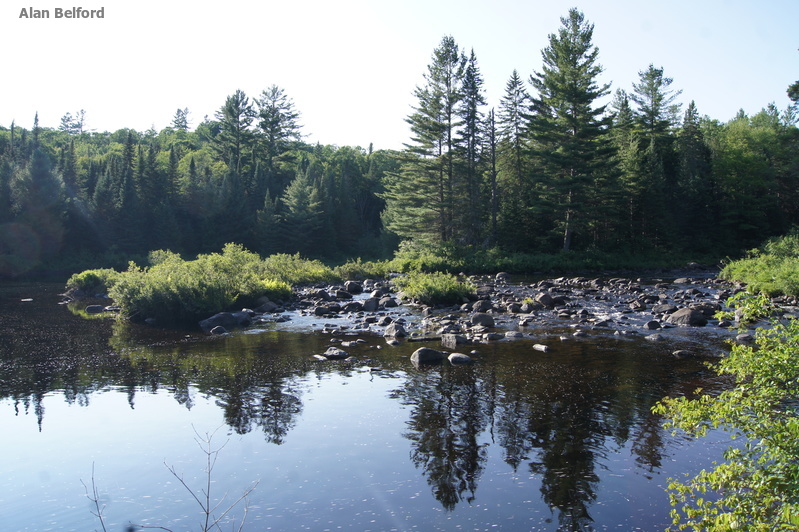
Such sites are also particularly nice during winter, when access to some of our birding hikes and paddles is difficult to come by thanks to the piles of snow which have been building up for the past few months. Those sites will eventually become more readily available when the snow melts, but in the meantime here are a few places worth checking out that do not require a long trek from the road.
The Adirondack Interpretive Center in Newcomb
The Newcomb AIC is well-known for its 3.6 mile trail system, which winds through mixed deciduous forests as it skirts Sucker Brook, Rich Lake, and Belden Lake. During spring and summer the trails and woods boast a long list of birds including American Redstarts, Northern Parulas, Veeries, Swainson’s Thrushes, and Blue-headed Vireos, as well as Bald Eagles, Ospreys, and Common Loons on the lakes.
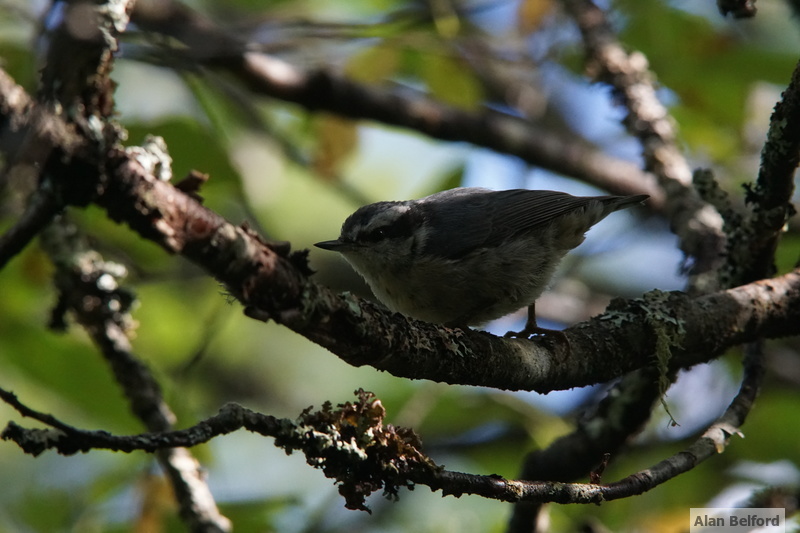
Not only does the AIC offer a great diversity of species, but it does so within easy walking distance of the center, or without walking at all. Many species can be found along the short entrance road or from the building itself. That is advantageous during winter if you don’t want to don the necessary snowshoes to explore the trails. And while the diversity of species is much lower during winter as we wait for most of the above species to return to the Adirondacks, the center’s bird feeders are usually busy with the likes of Black-capped Chickadees and Red-breasted Nuthatches, among others.
In addition, the feeders sometimes attract sought-after species like Evening Grosbeaks and Common Redpolls during the cold months, making the AIC an excellent stop on a trip through Newcomb. Birders should know that the building is only open during winter on weekends from 10 a.m. until 4 p.m. — during which time they can lounge inside with hot cocoa and watch the birds from the windows. But they can visit to explore the trails at any time and an evening stop along the road may be greeted by a calling Barred or Great Horned Owl.
The Route 28N corridor through Minerva
Route 28N in the town of Minerva passes through some splendid boreal forest habitat as it cuts through Vanderwhacker Mountain Wild Forest. While birders need to be mindful of cars moving along the road at a fast clip, a series of trailheads and pull-offs allow birders space to pull off the road and investigate the forest. The key at any time of year, particularly winter, is to make sure you are far enough off the road.
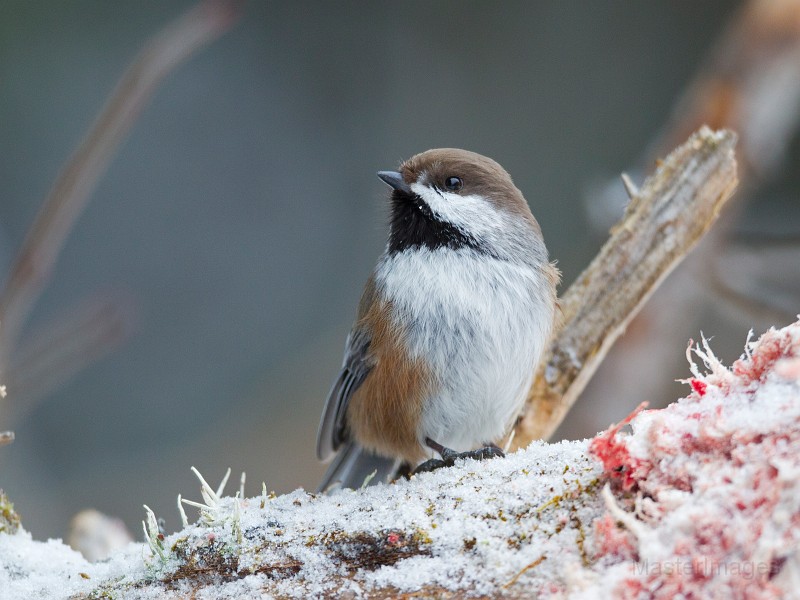
Since many of the pull-offs are trailheads or roads, interested birders can wander far on 28N as they explore. And so birders can stick to the road or they can bring along their skis or snowshoes to adventure farther afield if conditions allow them to do so. During the warm months the trails and woods are full of warblers, vireos, and many other birds. During the winter that list is pared down considerably but the boreal nature of the forest offers the likes of Black-backed Woodpeckers and Boreal Chickadees year-round. Both Red and White-winged Crossbills can also be found, particularly Red, depending on available food as well. As a result, birders should have their ears open for the flight calls of crossbills overhead.
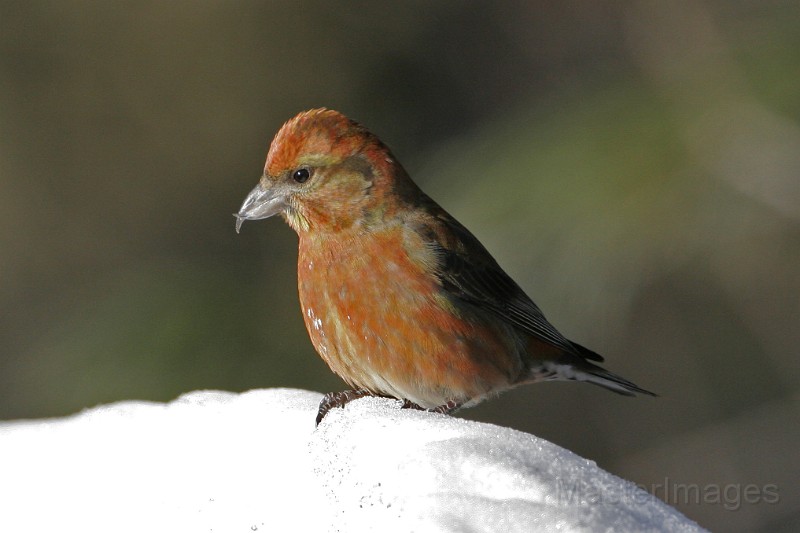
Specifically, birders can explore places like the Roosevelt Truck Trail (reached on a small road 3.7 miles south of Blue Ridge Road or 1.6 miles north of where the Boreas River crosses beneath Route 28N), a 2.5-mile trail that leads through beautiful boreal woods for Black-backed Woodpecker, Canada (Gray) Jay, and Boreal Chickadee. Birders can also stop at the bridge over the Boreas River, where Moose Pond Way enters from the west. This presents excellent birding during the warm months when access to the road is easier. The river also marks the trailheads (there are two) for Hewitt Eddy (5.3 miles from Blue Ridge Road and another 0.8 mile further south), both of which allow for a short, easy hike off of 28N.
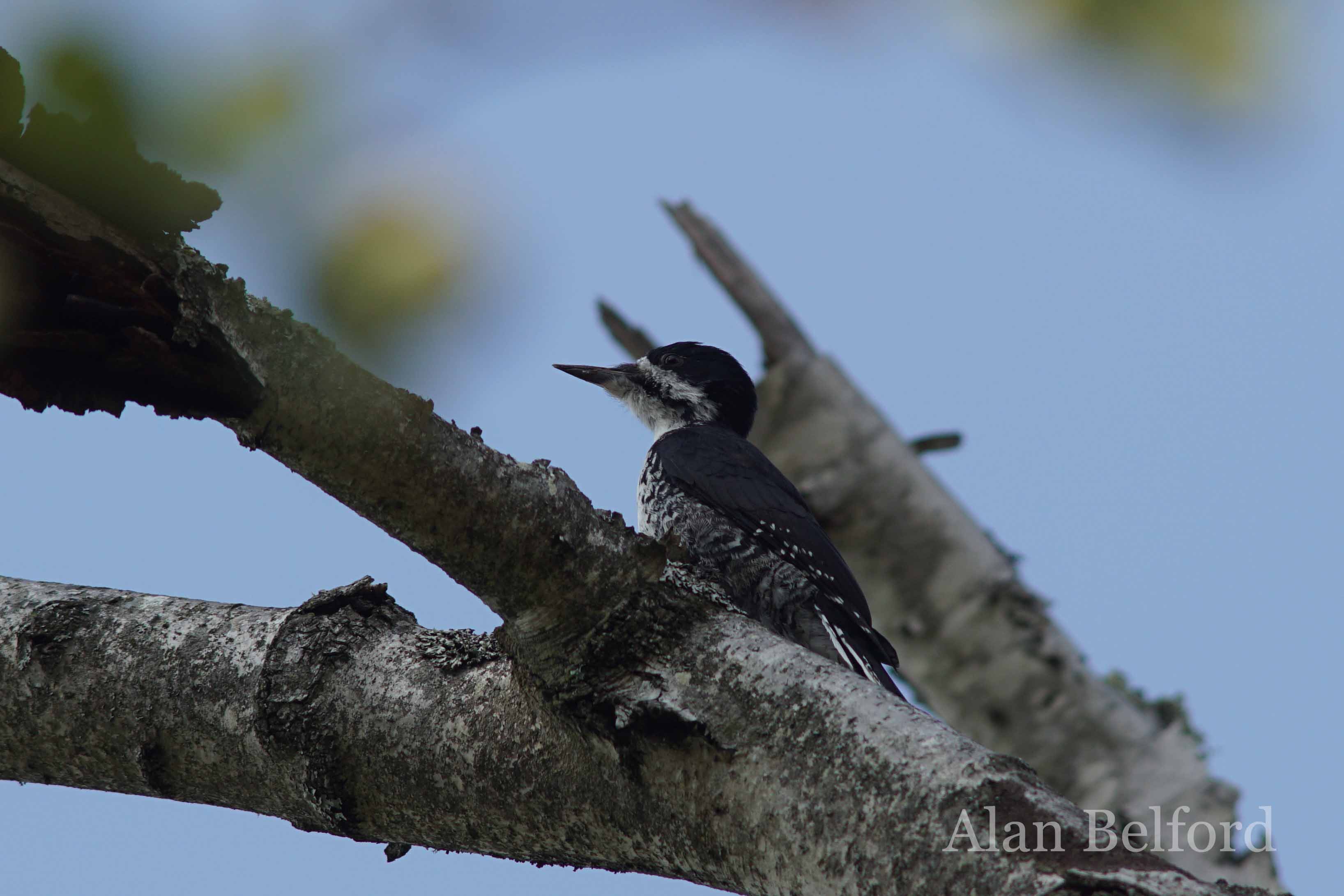
Route 28N continues on, passing trailheads for places likes Hewitt Pond, Rankin Pond, and Stony Pond before reaching Northwoods Club Road on the way to Minerva. And each trailhead offers the chance to explore Vanderwhacker Mountain Wild Forest on foot or skis, or to simply stop and bird from your car along the road. It’s your choice.
Schroon Lake
While many birders — including me — prefer to head out into the woods in search of their feathered quarry, we would be remiss if we didn’t pay attention when we are in our small Adirondack towns where many species of interest can be found.
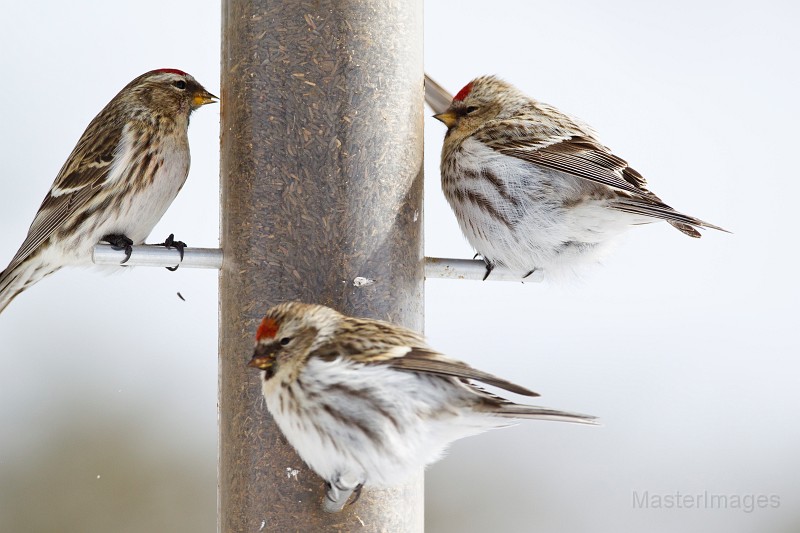
Schroon Lake is one such example. While the Schroon Lake Town Park is well known for the Fish Crows it attracts during the warm months, the trees and park may also draw in migrant songbirds come spring just as the lake itself hosts migrating ducks before it ices up in the autumn. Keeping with our theme, much of this can be covered from the roadside or a short walk across the lawns of the park to view the lake from near the beach.
During winter our towns are often some of the best places to bird thanks in large part to the food we provide for birds. For instance, Common Redpolls have moved south this year and their numbers have recently been building. The same is true of Evening Grosbeaks. So anyone passing through a town like Schroon Lake should pay attention to bird feeders as they drive.
In addition, ornamental fruit trees in parks and gardens often attract other winter specialties — Bohemian Waxwings and Pine Grosbeaks — and both species have also traveled south this winter in search of food. Birders should check out Schroon Lake and any other nearby towns for fruit-laden trees, monitoring them for such colorful inhabitants. After all, these northern visitors move around regularly from food source to food source meaning vigilance is key in tracking them down.
With winter birding here and spring birding soon to come birders should plan their outdoor adventure today by checking out our lodging and dining pages!
